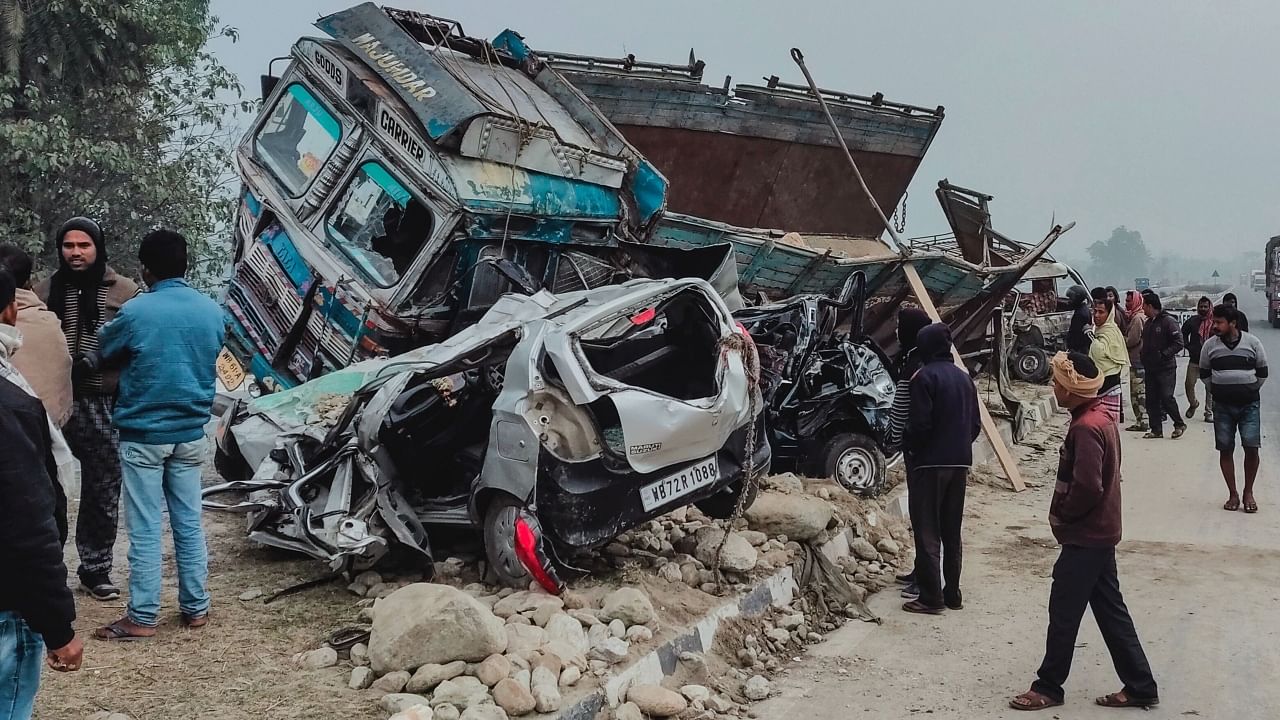
By Anurag Kotoky
The car accident over the weekend that killed Cyrus Mistry -- scion of one of the best-known business families -- has reignited concerns about the poor state of India’s roads, identified by the World Bank as the world’s deadliest.
Mistry, who was 54, died on Sunday during a trip between Ahmedabad and Mumbai after the car he was in hit a divider on a bridge. Images circulating on social media showed skid-marks of a Mercedes veering off the road just next to a pothole. Airbags in the rear didn’t inflate.
Also Read: Road crashes claimed 1.55 lakh lives in India in 2021, highest ever in a calendar year: Govt data
While India has built the world’s second-biggest road network spanning 5.89 million kilometers, its highways are often marred by shoddy construction and poor maintenance. Prior to the pandemic, there was one deadly road crash in India every four minutes, equal to 11 per cent of all crash-related deaths globally even though the South Asian nation accounts for just 1 per cent of the world’s vehicles.
Road Transport Minister Nitin Gadkari -- one of Prime Minister Narendra Modi’s top lieutenants -- has set an ambitious target of building more than 100 kilometers of roads every day, after achieving what the government calls a world record of constructing 38 kilometers a day. The nation has also allowed 100 per cent foreign direct investment in roads despite big construction projects often facing public backlash over land acquisition and toll charges.
While the police have given scant details about Mistry’s accident, the incident puts the focus back on the condition of roads in India, which are used by truck drivers to transport more than two thirds of the nation’s goods, underscoring their economic importance. In 2020, India reported more than 3.6 million road crashes with 1.3 million fatalities, according to the Stanford Social Innovation Review.
Seasonal rains can cost the economy billions of dollars in India’s mega cities by disrupting public transport, with flash floods in Mumbai, New Delhi and Chennai often closing roads and shutting rail networks and airports. On Monday, a large part of the major roads in the information technology hub of Bengaluru were submerged following heavy rains.
Road accidents in India did see a downward trend in recent years, but they picked up again in 2021, even though most people preferred to stay at home during the worst of the pandemic, data from National Crime Records Bureau show. The so-called National Highways -- controlled by a state-run agency and sometimes contracted out to private companies against a fee -- witnessed the most incidents and most deaths every 100 kilometers, the data show.
Apart from roads, drivers in India are notorious for not following rules, which is somewhat catalyzed by the relatively low penalties that are imposed. Fines for driving without a seatbelt could be as low as just over $1, and even then enforcement remains largely sketchy.